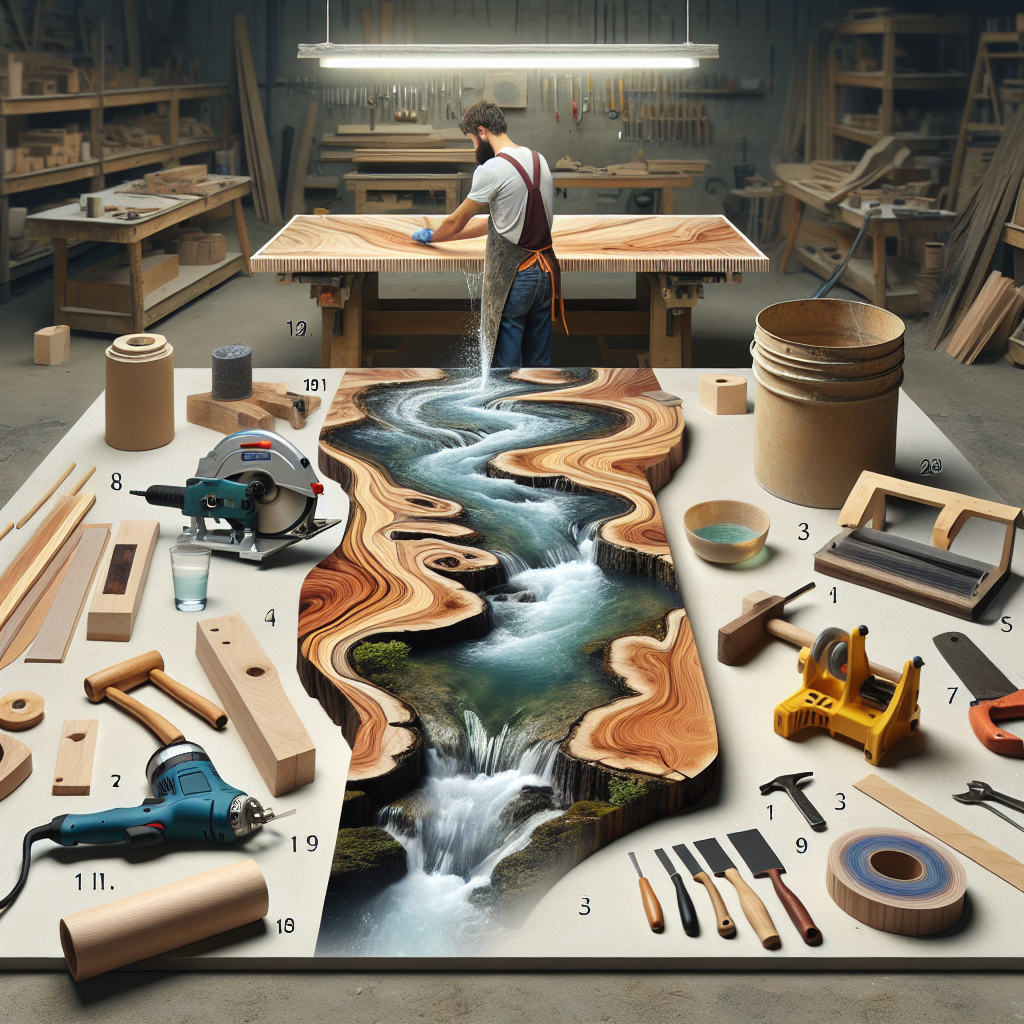
How to make a river table
Crafting the Perfect River Table: A Step-by-Step Guide
Creating a river table has become a popular woodworking project, merging the beauty of nature with fine craftsmanship. This guide will take you through the process of making your very own unique river table, highlighting the essential tools, materials, and techniques needed to achieve stunning results. Whether you're a beginner or an experienced woodworker, this comprehensive guide will help you navigate how to transform natural wood into a mesmerizing centerpiece.
Understanding the Concept of a River Table
Before diving into the step-by-step process, it’s important to understand what a river table entails. A river table is characterized by a clear or colored resin that mimics the flow of a river running between two halves of a slab of wood. The design can evoke a sense of tranquility, making it a captivating piece for living rooms, offices, or dining areas.
Materials Required
To embark on your journey of creating a river table, you'll need the following materials:
- Live edge wood slabs (such as walnut, cherry, or maple)
- Epoxy resin (clear or tinted)
- Wood glue
- Sanding paper (various grits)
- Finish (oil or polyurethane)
- Protective gear (gloves, mask, goggles)
Tools You Need
In addition to materials, having the right tools is crucial for crafting a river table. Here’s a list of essential tools:
- Table saw
- Router (for edge finishing)
- Sawhorses
- Miter saw
- Drill and drill bits
- Mixing tools for resin
- Clamps
- Sanding machine or hand sander
Step-by-Step Process: How to Create Your River Table
Now that you have a clear understanding of the materials and tools needed, let’s get started on how to make a river table.
Step 1: Selecting the Right Wood
Your journey begins with selecting the perfect wood slabs. Look for pieces that have an interesting grain pattern, live edges, and minimal defects. Two matching slabs will create the halves of your river table, forming the banks of your 'river.'
Step 2: Preparing the Wood
Before gluing or pouring resin, you must prepare the wood. Here’s how:
- Sand the surface of both slabs to remove any dirt, debris, or rough spots.
- Use a router to shape the edges if you prefer a smooth finish.
- Ensure both slabs are aligned and match in height. If they’re uneven, use a planer or sander to level them out.
Step 3: Building the Mold
Creating a mold is essential to hold the epoxy resin in place while it cures. Follow these steps:
- Use melamine boards to construct a rectangular mold that matches the dimensions of your table.
- Ensure the mold is sealed to prevent leakage.
- Apply a mold release agent to make it easier to remove the cured resin later.
Step 4: Positioning the Wood Slabs
Place the wood slabs into the mold. Ensure there’s enough space between them for the resin to flow. You can use small wooden blocks to elevate the slabs, creating a gap for your desired resin pour thickness.
Step 5: Mixing and Pouring the Epoxy Resin
Time to mix your epoxy resin following the manufacturer's instructions. Here's a quick guide:
- Measure the components of the epoxy: typically, it’s a one-to-one ratio.
- Mix thoroughly for a few minutes until you achieve a consistent color and texture.
- If you’re adding color, this is the time to do so.
- Slowly pour the resin into the mold, ensuring it fills the gap between the wood slabs.
Step 6: Curing the Resin
Allow the resin to cure according to the manufacturer’s instructions—this can take anywhere from 24 to 72 hours. Ensure the workspace is free from dust and disturbances during this time.
Step 7: Removing from the Mold
Once cured, carefully remove the table from the mold. This step requires patience:
- Gently tap the edges of the mold to allow the board to release.
- Use a utility knife to cut away any resin from the mold, but be careful not to damage the wood.
Step 8: Sanding for Perfection
With your river table out of the mold, it's time to smooth everything out. Proper sanding will ensure a flawless finish:
- Start with a low-grit sandpaper (60-80 grit) and work your way up to higher grits (220-320 grit).
- Sand the edges of the wood too, giving it a comfortable, smooth feel.
- Hand-sand around any curves or intricate designs.
Step 9: Applying the Finish
Finishing your river table is essential to enhance its appearance and protect it from wear and tear. Choose from various finishes:
- Natural oils (such as Danish oil or teak oil) for a warm, matte finish.
- Polyurethane for a more robust protective layer.
Step 10: Final Assembly and Placement
After the finish dries, it’s time for the final touches:
- Attach any desired legs or supports to your table.
- Ensure the structure is stable and level.
- Clean the surface to remove any dust or residues from sanding.
Maintenance Tips for Your River Table
Once your river table is completed, maintaining its beauty is essential. Here are some tips:
- Keep the table out of direct sunlight to prevent fading.
- Use coasters and placemats to avoid scratches and spills.
- Regularly apply the chosen finish to keep the wood looking fresh and vibrant.
"A river table not only showcases the beauty of wood but also encapsulates the artistry of craftsmanship." – Woodworking Enthusiast
Conclusion
With patience, creativity, and the right tools, you can master the art of creating stunning furniture that showcases your individuality. Following these steps will guide you on how to make a river table that not only serves as a functional piece but also as an enchanting piece of art. So gather your materials, unleash your artistic flair, and embark on an exciting woodworking journey.
Happy woodworking!
By Guest, Published on October 13th, 2024